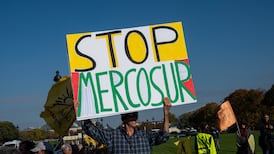A ceasefire between Israel and Hizbullah came into effect early on Wednesday morning in Lebanon after more than a year of fighting.
The deal was announced on Tuesday by Israel, France and the US and promises a 60-day ceasefire in the conflict which escalated in September.
More than a million Lebanese people have been displaced by the fighting, which was triggered when Hizbullah, the Iran-backed militants, began firing into northern Israel in the days after the Hamas-led October 7th, 2023 attack from Gaza.
During the conflict, more than 3,700 Lebanese and more than 140 Israelis have been killed while widespread infrastructure and building destruction will require extensive and costly reconstruction.
READ MORE
Right up to the final moments before the truce deadline, attacks by both sides were recorded and Beirut suffered an air bombardment that left its war-weary population sceptical of the promised ceasefire.
Irish Times reporter Sally Hayden, who is based in Beirut, describes what life is like for citizens now that the bombardments have ceased and describes the dancing in the streets and exuberance that greeted the news.
But as she tells In the News, the past year has been brutal to live through.
And while US president Joe Biden has hopes that this ceasefire will lead to a similar truce in Gaza, Middle East observers suggest this is not likely.
Presented by Bernice Harrison. Produced by Suzanne Brennan.




























